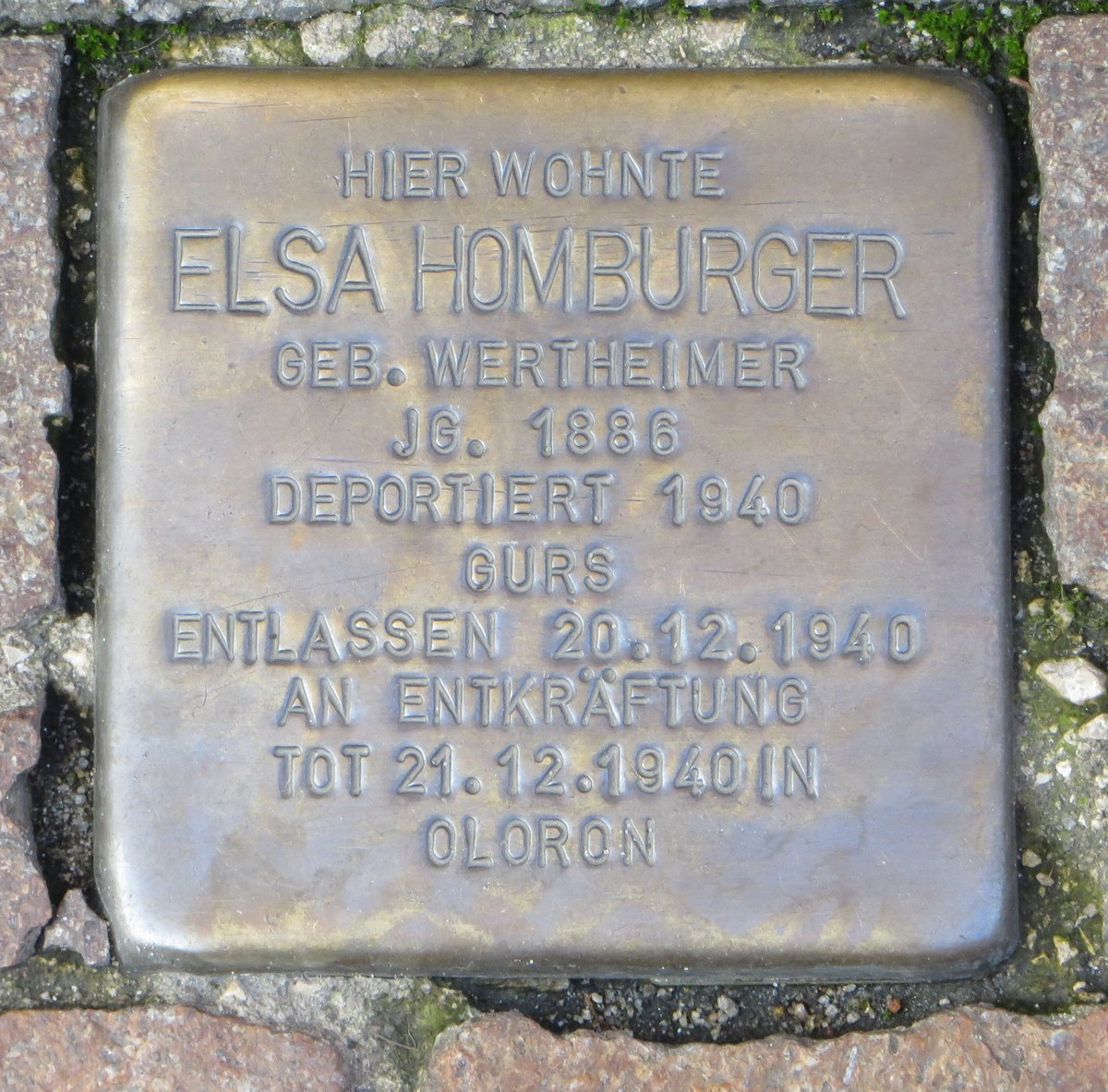
Stolperstein for Elsa Homburger in Karlsruhe: A Visitor’s Guide
Introduction
The Stolperstein commemorating Elsa Homburger in Karlsruhe offers a poignant encounter with the history of the Holocaust. These “stumbling stones,” small brass plaques embedded in sidewalks across Europe, memorialize individuals persecuted by the Nazis. This guide provides comprehensive information for visitors, including historical context, location details, accessibility information, and nearby attractions.
The Stolpersteine Project
The Stolpersteine project, initiated by German artist Gunter Demnig, is the world’s largest decentralized memorial. Each stone marks the last freely chosen residence of a victim of National Socialism, including Jews, Roma, LGBTQ+ individuals, political dissidents, and people with disabilities (Stolpersteine.eu; Fabrizio Musacchio, 2024). As of 2025, over 100,000 Stolpersteine have been installed across 27 countries. The stones are funded by donations and often involve local communities in their placement and upkeep.
Jewish Life and Persecution in Karlsruhe
Karlsruhe had a thriving Jewish community before the Nazi era. However, with the rise of National Socialism, Jewish residents faced escalating persecution, including exclusion from public life, forced business closures, and ultimately, deportation and murder (Stadtgeschichte Karlsruhe). The “Wagner-Bürckel Aktion” in 1940 saw the deportation of over 6,500 Jews from southwestern Germany, including Karlsruhe, to the Gurs internment camp in France (Gedenkbuch Karlsruhe). Many were later transported to extermination camps.
Elsa Homburger: Story and Commemoration
Elsa Homburger was a victim of the Nazi “euthanasia” program, which targeted people with disabilities. Her Stolperstein, located at Zirkel 20 in Karlsruhe, serves as a reminder of her fate and the broader context of this often-overlooked aspect of the Holocaust (Stolpersteine Karlsruhe, 2016).
Visiting the Stolperstein for Elsa Homburger
- Location: Zirkel 20, Karlsruhe, Germany
- Visiting Hours: Accessible 24/7, as it’s located on a public sidewalk.
- Cost: Free.
- Accessibility: Generally accessible, although the condition of surrounding sidewalks may vary.
Nearby Attractions
- Karlsruhe Palace: A historic landmark with a museum and gardens.
- Botanical Gardens: Offers a peaceful respite.
- Stadtgarten: A large park in the city center.
- Karlsruhe Synagogue Memorial: Commemorates the synagogue destroyed during Kristallnacht.
- Other Stolpersteine: Numerous other Stolpersteine are located throughout Karlsruhe, each telling a unique story. Use online resources or the Audiala app to locate them.
Tips for a Meaningful Visit
- Plan your route: Use online maps or apps like Audiala to locate the Stolperstein and other sites of interest.
- Allow ample time: Take time to reflect on the individual story behind the Stolperstein.
- Consider a guided tour: For a deeper understanding of the historical context.
- Respect the site: Avoid stepping directly on the Stolperstein. Many visitors leave small stones or flowers as a sign of remembrance.
- Learn more: Research Elsa Homburger’s story and the history of Karlsruhe’s Jewish community before your visit.
























































































































































































